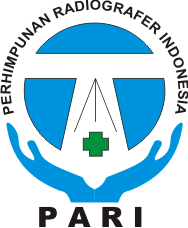Effectiveness Of Light Trap In Reducing Populatio House Fly (Musca Domestica)
Abstract
Flies are insects meperupakan fototropik is like light. At night off, but can be activated by the presence of artificial light. Fototropik properties form the basis for controlling flies fly population by using a Light Trap. Therefore, research on the effectiveness of Trap Light Lowering Population In house flies (Musca domestica) are particularly relevant to be implemented.
This study aimed to calculate the population of house flies (Musca domestica) before using Light Trap, counting house fly populations (Musca domestica) after using Light Trap, counting the number of flies caught on Light Trap, counting insects can be caught light trap, calculating the effectiveness decline in house fly populations (Musca domestica) using Light Trap and calculate the effectiveness of light traps in catching flies.
This type of research is experimental, by applying the tool Light Trap at the diner kitchen study sampled. Measurements of temperature, humidity, density of flies before and after the application of tools and light intensity performed at the study site. While the identification of the type and number of insects trapped done in the laboratory.
The results showed that populations of the house fly (Musca domestica) on average before using Light Trap 3 tails / grill block, while the population of flies after use Light Trap is 2.67 head / block grill. Average flies caught 31 fish / trap. Insects that can trap the light caught; fly home 651 tail; 628 tail flying insects as mosquitoes 91 tail; ant 79 tail; butterfly 60 head; wasp 2 heads, spiders and beetles 1 tail. Effectiveness of light traps in catching flies 97% compared to controls.
This study aimed to calculate the population of house flies (Musca domestica) before using Light Trap, counting house fly populations (Musca domestica) after using Light Trap, counting the number of flies caught on Light Trap, counting insects can be caught light trap, calculating the effectiveness decline in house fly populations (Musca domestica) using Light Trap and calculate the effectiveness of light traps in catching flies.
This type of research is experimental, by applying the tool Light Trap at the diner kitchen study sampled. Measurements of temperature, humidity, density of flies before and after the application of tools and light intensity performed at the study site. While the identification of the type and number of insects trapped done in the laboratory.
The results showed that populations of the house fly (Musca domestica) on average before using Light Trap 3 tails / grill block, while the population of flies after use Light Trap is 2.67 head / block grill. Average flies caught 31 fish / trap. Insects that can trap the light caught; fly home 651 tail; 628 tail flying insects as mosquitoes 91 tail; ant 79 tail; butterfly 60 head; wasp 2 heads, spiders and beetles 1 tail. Effectiveness of light traps in catching flies 97% compared to controls.
Keywords
Light Trap; House Flies (Musca domestica)
Full Text:
PDFDOI: https://doi.org/10.31983/link.v9i1.165
Article Metrics
Abstract view : 548
Download PDF : 1120
Refbacks
- There are currently no refbacks.
LINK (ISSN: 1829-5754 e-ISSN: 2461-1077), dipublikasikan oleh Pusat Penelitian dan Pengabdian kepada Masyarakat, Poltekkes Kemenkes Semarang, Jl. Tirto Agung, Pedalangan, Banyumanik, Semarang, Jawa Tengah 50268, Indonesia; Telp./Fax: (024)7460274
Public Services :
![]() E-mail: link@poltekkes-smg.ac.id
E-mail: link@poltekkes-smg.ac.id
 LINK is licensed under a Creative Commons Attribution-ShareAlike 4.0 International License
LINK is licensed under a Creative Commons Attribution-ShareAlike 4.0 International License















